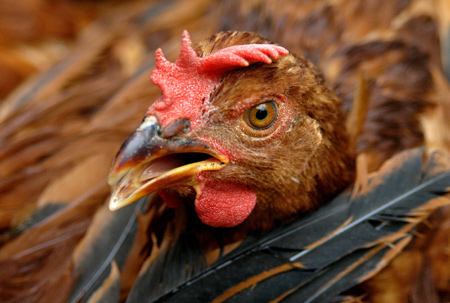A rooster is seen at a chicken shop in the southern Indian city of Bangalore August 14, 2006.(Xinhua/Reuters Photo)
The international science community is not doing enough to track many avian influenza viruses that might cause the next pandemic, an expert from University of California, Davis, said in Dec. 6 issue of the journal Nature.
Global surveillance is critical for identifying and tracking potential pandemic viruses such as highly pathogenic H5N1. But the current surveillance strategy in wild birds is piecemeal and risks missing important virus sources or subtypes, Walter Boyce writes in a commentary entitled "Vigilance is not enough."
Boyce, a UC Davis professor of veterinary medicine, is co-director of the Center for Rapid Influenza Surveillance and Research, which is charged with tracking viruses in wild birds in the United States and Asia.
Addressing journal Nature's worldwide audience, Boyce said scientists must take several steps to catch avian influenza viruses "before they catch us."
He said surveillance has focused too heavily on Europe and North America, where few wild birds are infected. To really understand the role of wild birds in spreading H5N1, more surveillance should be done in places where the virus is endemic, such as Asia and Africa.
Currently, he said, the narrow focus on H5N1 misses other viruses that also pose pandemic risks. He advised that all of the influenza viruses collected be characterized.
He noted that whether caused by regulatory hurdles or researchers' concerns about intellectual property rights, a reluctance to share samples hampers health officials' ability to track and respond to potential pandemic viruses.
He recommended that the scientific community set a standard of releasing data no more than 45 days after it is generated.
(Xinhua News Agency December 8, 2007)


